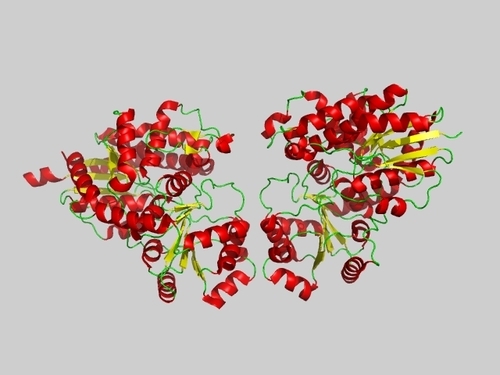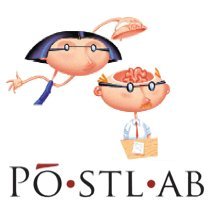
Ian Ballard 🏳️🌈
@iancballard
Followers
599
Following
685
Media
7
Statuses
147
Assistant Professor at UC Riverside studying learning and goal-directed behavior. Director of the Computational Cognitive and Neural Sciences Lab. He/Him.
Riverside, CA
Joined November 2015
Interested in dopamine? Have fMRI data? We’ve found a temporal BOLD feature that carries rich information about dopamine. Measurable in resting-state and task fMRI, this feature opens new ways to indirectly probe dopamine’s role in cognition and disease.
biorxiv.org
Spatial variations in dopamine function are linked to cognition and substance use disorders but are challenging to characterize with current methods. Because dopamine influences blood vessel dilati...
1
2
14
Excited to share our upcoming workshop on neuroscience, reinforcement learning, and decision making at RLDM 2025 in Dublin, Ireland — June 11–14! Check out the terrific speaker lineup: 🔗 https://t.co/LAt5UJSW5V Co-organized with @angelaradulescu
sites.google.com
The key ingredients for a successful learning algorithm are a useful representation of the world and a method for integrating new information into existing knowledge. Uncovering the representations...
0
3
10
Check out our preprint to learn more about how hemodynamic latencies map regional, individual, and pathological differences linked to dopamine. We'd love to hear your questions, ideas, or feedback! @aberryobie @blaisefrederick
0
0
1
In individuals with cocaine use disorder, we found a spatial gradient of altered hemodynamic latencies in the striatum. This pattern independently correlated with nicotine use, revealing a conserved physiological profile associated with addictive substance use. 5/n
1
0
0
Using PET, genetics and pharmacology, we found that hemodynamic latency is tightly coupled to dopamine physiology. Broadly speaking, higher latency in the NAcc was associated with lower dopamine function and more perseverative behavior—linking BOLD signal timing to cognition. 4/n
1
0
1
Hemodynamic latencies are markedly increased in the nucleus accumbens (NAcc)—a key dopaminergic region linked to addiction. This effect is strikingly precise: the anatomical NAcc boundary (green) aligns closely with the shift in hemodynamic latency. 3/n
1
0
1
fMRI doesn’t directly measure dopamine, but could dopamine influence BOLD signal timing? Dopamine axons wrap around microvessels, and dopamine triggers vasoconstriction. We hypothesized that higher extracellular dopamine increases the latency of the hemodynamic response. 2/n
1
0
1
Check out our Special Focus on motivation and decision-making in JOCN 🚨. Each paper applies computational process modeling to reveal how motivational factors shape the cognitive processes guiding decision-making. @TarazLee @amitaishenhav @yue_l_zhang @JasonLeng5
Excited to see this Special Focus at @JOCN_Journal on Neural and Computational Mechanisms of Motivation and Decision-Making, finally out! Full collection here:
0
0
5
ALSO in this month's @jocn@JOCN_Journal @jocn.bsky.social Special Focus: Neural and Computational Mechanisms of Motivation and Decision Making Debbie M. Yee Tyler J. Adkins, Taraz G. Lee Ian C. Ballard, M. Waskom, K. C. Nix, M. D’Esposito Yue Zhang, Xiamin Leng, A.Shenhav
0
1
3
This work would not have been possible without the contributions of my co-authors (who are mostly not on X), and I want to call out @aberryobie for her role and expertise in the PET imaging of dopamine neurophysiology!
0
0
1
Why do we sometimes rely on habits, even when they conflict with our goals? In our new preprint, 'A dopaminergic basis of behavioral control,' we explore how dopamine in the striatum influences the trade-off between automatic and goal-directed action. https://t.co/81spaM74hg
biorxiv.org
Both goal-directed and automatic processes shape human behavior, but these processes often conflict. Behavioral control is the decision about which process guides behavior. Despite the importance of...
1
11
41
VOTE FOR YOUR FAVORITE SYMPOSIUM! Vote for the Symposium you'd most like to see at the #CNS2025 Annual Meeting. Voting Deadline - October, 28, 2024 For more information visit: https://t.co/1QmmZGYW7C
@CogNeuroNews @CNS_TA
0
5
8
💥New paper from the lab is out today in @NatureNeuro by phenom @laura_pritschet!! See LP's great summary below. This paper launches The Maternal Brain Project, an international effort to longitudinally map the brain & proteome across pregnancy, thanks to @bowers_wbhi @CZIscience
5 years ago, on the heels of 28andMe, our team designed a new precision imaging experiment: scanning an individual’s brain throughout her entire pregnancy. We are excited to share that these findings are out today in @NatureNeuro!
7
46
189
Looking forward, I am excited about the promise of using neural networks to design experiments in psychology and neuroscience. I am a fan of this paper using a similar approach: https://t.co/M5MTgQoZIW
@ptoncompmemlab
elifesciences.org
Hippocampal learning in dentate gyrus follows a U-shaped function, with moderate, but not high or low, overlap between representations leading to differentiation of neural patterns.
1
0
0
Using our stimulus set, we (@maytusp, @sirawaj, @JohnPappas10) found that both low and high-level visual properties influence human similarity judgments, and the ability of neural network layers to explain behavior corresponded to their Brain-Score.
1
0
1
Conceptually similar objects often share low-level visual properties, but these may separately influence decisions. For example, you may choose a less-preferred dessert at a bakery because it is more visually appealing. Using neural networks, we can distinguish these properties.
1
0
1
New paper alert! How do low-level visual properties influence decision-making? We developed an approach to tackle that question using deep neural networks to design a stimulus set that teases apart low from high-level visual properties. @eccvconf
https://t.co/HGzvwEFlUQ
arxiv.org
In visual decision making, high-level features, such as object categories, have a strong influence on choice. However, the impact of low-level features on behavior is less understood partly due to...
1
1
6










